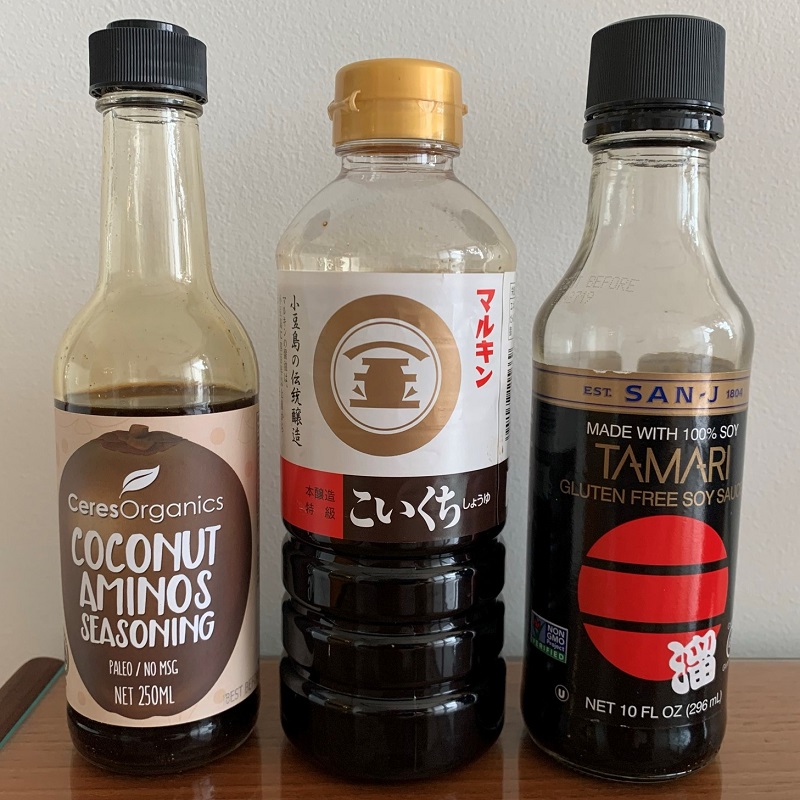When improving our health, there are a number of foods/additives that need to be avoided. One of these is salt. A little salt is essential, but most of us are getting far too much. Even before I started eating a Whole Food Plant Based (WFPB) diet, my doctor was telling me to cut back on salt, because it has a hypertensive effect. That is, the sodium found in salt constricts the arteries, which increases blood pressure. Salt also promotes water retention. And it is everywhere, especially in convenience foods.
I am not going to pretend that I know the details of the science around salt. To get the low down, I suggest referring to the bible on nutrition – NutritionFacts.org. It is teeming with summaries of all the research.
For a highly recommended listen, this PlantStrong podcast tells a compelling story about salt. It is an interview with a scientist called Michael Jabobsen, who has studied salt, and other food additives, his whole life.
The purpose of this blog post is to talk about practical steps to manage salt levels. It is all very well to know that salt needs to be reduced. But by how much? What is acceptable? How do I tell how much I am getting?
In New Zealand the Ministry of Primary Industries recommends a maximum of 2g (2000mg) of sodium per day. And the NZ Nutrition Foundation recommends 920mg to 2300mg of sodium per day for people aged 17 or older.
That’s very easy to exceed, if you are eating prepared food. For instance, check these out:
- Subway 6″ Smashed Falafel Sub – 911mg sodium
- 8 pieces of Vegetable Sushi from St Pierres – anywhere from 417mg to 1040mg sodium
- KFC Vege Burger (825mg) and regular potato & gravy (434mg) – 1259mg sodium
And it can be easy to exceed when you are preparing your own food. For instance check these out:
- 1 cup (250ml) of Campbell’s Vegetable Stock – 1355mg sodium
- 1 teaspoon table salt – 2300mg sodium or 1g of salt – 383mg sodium
- 20ml Pams brand Soy Sauce – 1160 mg sodium
For me, the major hurdle is that I LOVE the taste of salt. And sometimes I simply crave the taste of it. So, here is how get that salty hit, while being mindful of my sodium intake:
- Low Sodium Salt: Scientist, Michael Jabobsen, tells us in this podcast, that the first thing we can do to lower our sodium intake is to shift from using standard table salt to Low Sodium table salt – a combination of standard table salt and salts made from other minerals. According to Michael, these other mineral salts are more bitter then standard salt, which is why food producers are reluctant to use them. But I have found the taste to be ok. The photo shows the only Low Sodium Salt I have been able to find in NZ. 1g Low Sodium Salt – 130mg sodium. That’s two thirds less sodium, for a similar taste.

- Coconut Aminos: Coconut Aminos has a very similar taste to Soy Sauce, but it has much less sodium. It is made with fermented coconut bark. Both the Soy Sauce and Tamari in this photo have 5500mg sodium/100ml. The Coconut Aminos has 1070mg sodium/100ml. That’s a fifth the amount of sodium for the same hit of flavour!

- Miso: This one may seem strange, as the sodium levels in Miso are high. But research shows that the constricting properties of the sodium in miso are balanced out by the fermented, whole food soy, making it a healthy food to eat. I have supermarket miso at home – 4700mg sodium/100g.

So there you have it. Three ways to include saltiness in your diet while being mindful of the sodium in the salt. I would love to hear your own salt hacks. Leave a comment, or show me on Instagram @abundantlyclear.nz.
Happy Healthy Eating!
Sodium stats from websites for following companies: McDonalds, KFC, St Pierre’s, Subway, Pams, Campbells on 29/07/2021.







Recent Comments